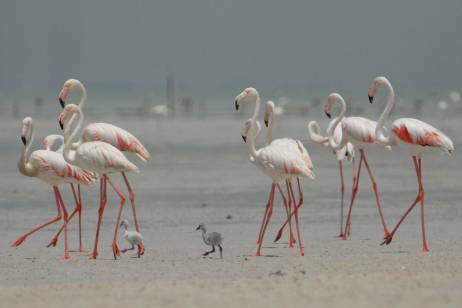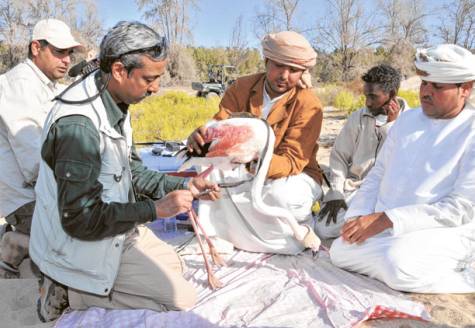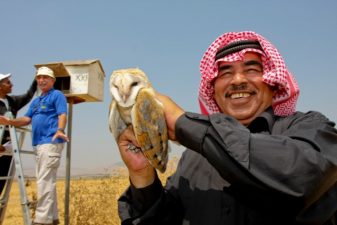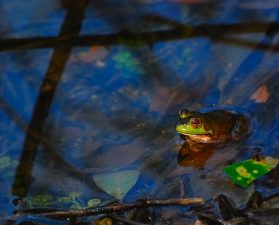 “Drones are the future of conservation,” said Dr. Shaikha Salem Al Dhaheri when commenting on his team’s plan to use drones to monitor flocks of flamingos at the Al Wathba Wetland Reserve in United Arab Emirates.Dr. Al Dhaheri is executive director of Terrestrial and Marine Biodiversity at the Environment Agency – Abu Dhabi (EAD.)
“Drones are the future of conservation,” said Dr. Shaikha Salem Al Dhaheri when commenting on his team’s plan to use drones to monitor flocks of flamingos at the Al Wathba Wetland Reserve in United Arab Emirates.Dr. Al Dhaheri is executive director of Terrestrial and Marine Biodiversity at the Environment Agency – Abu Dhabi (EAD.)

He explained that the drones will capture still and moving images of flamingos in their difficult to reach habitats such as the reserve’s lagoons and mud flats. These unmanned aerial vehicles weigh only a little more than a kilogram and have a top speed of more than 50 kilometers per hour. Dr. Al Dhaheri believes they will provide high quality data while minimizing time, costs and close human interactions with the flamboyances of flamingos at the reserve.
[youtube]https://www.youtube.com/watch?v=eeqDGFDeAZA&feature=youtu.be[/youtube]
A record number of 200 flamingo chicks were counted at the reserve during the summer of 2013. This is the highest number since the Arabian Peninsula’s first successful greater flamingo breeding took place here in 1998 and established the site’s protected status.

Flamingos can be seen at the reserve all year round and a successful robotic monitoring program will give naturalists useful information which can be used to protect the species and its natural environment. This isn’t the first non-military use of drones, lets hope it won’t be the last.
Photo and video from the Environment Agency – Abu Dhabi




The wetland itself is quite interesting as well, being created artificially from (supposedly) Treated Sewage Effluent overflow from the sewage plant next-door. It seems the flamingoes like the nutrient rich water, as they do in Dubai’s sewage-polluted creek. I can’t help but wonder whether a better plan might be to stop bulldozing the coastline environments and let the Flamingoes stay there in their natural habitats, and then use the TSE for more critical purposes. The sewage site is not exactly beautiful and access is pretty much impossible to get anyway; I guess when they say ‘flamingoes can be seen at the site all year round’ they are speaking hypothetically.